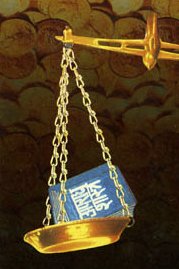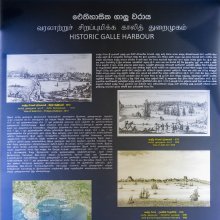Lekhaka: 23 definitions
Introduction:
Lekhaka means something in Hinduism, Sanskrit, Buddhism, Pali, the history of ancient India, Marathi, Hindi. If you want to know the exact meaning, history, etymology or English translation of this term then check out the descriptions on this page. Add your comment or reference to a book if you want to contribute to this summary article.
Alternative spellings of this word include Lekhak.
Images (photo gallery)
In Hinduism
Purana and Itihasa (epic history)
Source: Cologne Digital Sanskrit Dictionaries: The Purana IndexLekhaka (लेखक).—A scribe who is an expert in all languages and who is versed in all Śāstras; characteristics of writing; a scribe must be able to reproduce in a few sentences much that is spoken.*
- * Matsya-purāṇa 215. 26-8.

The Purana (पुराण, purāṇas) refers to Sanskrit literature preserving ancient India’s vast cultural history, including historical legends, religious ceremonies, various arts and sciences. The eighteen mahapuranas total over 400,000 shlokas (metrical couplets) and date to at least several centuries BCE.
Arthashastra (politics and welfare)
Source: archive.org: Studies in Kautilya VocabularyLekhaka (लेखक) refers to a type of profession mentioned in the Śukranītisāra 2.128-188.—The Śukranītisāra is a Sanskrit work on ethics by Śukrācārya comprised of four chapters. The second chapter (uvarājādikṛtya, “the duties of the royal princes and the like”) describes a large number of varied topics, eg., it contains observations on the ministers, priests, sacive, treasury, a large number of officers and employees (such as a Lekhaka).
Source: archive.org: Hindu Mathematics (Artha)Lekhaka (लेखक) refers to “writers” of grant plates (used as legal documents in ancient India).—They were written by professional writers. The existence of such writers is mentioned in the southern Buddhist canons and in the Epics. They have been called lekhaka, lipikara and later on divira, karaṇa, kāyastha, etc. According to Kalhaṇa (Rājataraṅgiṇī), the Kings of Kashmir employed a special officer for drafting legal documents. He bore the title of paṭṭopādhyāya, i.e., the teacher (charged with the preparation) of title deeds. The existence of manuals such as the lekhapañcaśikā, the lekhaprakāśa, which give rules for drafting letters, land grants, treaties, and various kinds of bonds and bills of exchange, show beyond doubt that the writing of grant plates [by the lekhaka] was a specialised art and that the style of writing those documents must always have been centuries behind the times, just as it is even to-day with respect to legal and state documents.
Source: Shodhganga: Kakati Ganapatideva and his times (artha)Lekhaka (लेखक, “writer”) is an official title designating one of the seventy-two officers (niyoga) of the Bāhattaraniyogādhipati circle, according to the Inscriptional glossary of Andhra Pradesh (Śāsana-śabdakośāmu). The bāhattaraniyoga-adhipati is the highest executive officer of this circle (including a Lekhaka). For example: During the reign of Gaṇapatideva, the area extending between Pānagal to Mārjavāḍi was entrusted to Gaṇḍapeṇḍāru Gangayasāhiṇi as Bāhattaraniyogādhipati. Later on, this office was entrusted to Kāyastha Jannigadeva.

Arthashastra (अर्थशास्त्र, arthaśāstra) literature concerns itself with the teachings (shastra) of economic prosperity (artha) statecraft, politics and military tactics. The term arthashastra refers to both the name of these scientific teachings, as well as the name of a Sanskrit work included in such literature. This book was written (3rd century BCE) by by Kautilya, who flourished in the 4th century BCE.
Kavya (poetry)
Source: archive.org: Naisadhacarita of SriharsaLekhaka (लेखक) refers to an “artist”.—Cf. Hastalekha, which refers to “sketching practice before producing an object of art”, and is mentioned in the Naiṣadha-carita 7.72; 21.69.—Cāṇḍūpaṇḍita gives hastolaka as an equivalent. In 21.69 the word lekhaka used in connection with hastalekha means “an artist”.

Kavya (काव्य, kavya) refers to Sanskrit poetry, a popular ancient Indian tradition of literature. There have been many Sanskrit poets over the ages, hailing from ancient India and beyond. This topic includes mahakavya, or ‘epic poetry’ and natya, or ‘dramatic poetry’.
Jyotisha (astronomy and astrology)
Source: Wisdom Library: Brihat Samhita by VarahamihiraLekhaka (लेखक) [=Lekha] refers to “writers”, according to the Bṛhatsaṃhitā (chapter 5), an encyclopedic Sanskrit work written by Varāhamihira mainly focusing on the science of ancient Indian astronomy astronomy (Jyotiṣa).—Accordingly, “If the sun and moon should begin to be eclipsed when only half risen, deceitful men will suffer as well as sacrificial rites. [...] If the sun and moon should be eclipsed when in the sign of Leo (Siṃha) hill men, prince like people possessed of a single military force, princes and forest men will suffer miseries. If they should be eclipsed when in the sign of Virgo (Kanyā), crops, poets, writers [i.e., lekhaka] and singers will suffer and the rice fields of Aśmaka and Tripura will be destroyed”.

Jyotisha (ज्योतिष, jyotiṣa or jyotish) refers to ‘astronomy’ or “Vedic astrology” and represents the fifth of the six Vedangas (additional sciences to be studied along with the Vedas). Jyotisha concerns itself with the study and prediction of the movements of celestial bodies, in order to calculate the auspicious time for rituals and ceremonies.
India history and geography
Source: Wisdom Library: India HistoryLekhaka refers to “writers” (some of whom were in the service of kings and Mahābhojas) and represents one of the various classes of workers mentioned in the inscriptions of Andhra country. Such inscriptions reflect the industrial and commercial advances of the early history of Andhra. Most of the crafts and industries having such artisans (e.g., the Lekhakas) were organized into guilds, with each guild having their alderman (seṭhin or śreṣṭhin) and offices in town halls (nigama-sabhā). Such guilds were sometimes granted permanent endowments (akhayanivi) as a form of investment.
Source: Cologne Digital Sanskrit Dictionaries: Indian Epigraphical GlossaryLekhaka.—(CII 3, etc.), a writer; a technical term for one who wrote a record [on copper plates, stone slabs, etc., in order to facilitate its correct engraving by an artisan], as opposed to the composer of the document (see also likhita). (IE 8-3; EI 28, 30; LL; HD), a writer, scribe or clerk (see Bomb. Gaz., Vol. XVI, pp. 582 and 605; Viṣṇudharmottara, II. 24. 26-28; Śukranītisāra, II. 120). (LP), a record or document; mistake for lekhana. Note: lekhaka is defined in the “Indian epigraphical glossary” as it can be found on ancient inscriptions commonly written in Sanskrit, Prakrit or Dravidian languages.

The history of India traces the identification of countries, villages, towns and other regions of India, as well as mythology, zoology, royal dynasties, rulers, tribes, local festivities and traditions and regional languages. Ancient India enjoyed religious freedom and encourages the path of Dharma, a concept common to Buddhism, Hinduism, and Jainism.
Languages of India and abroad
Pali-English dictionary
Source: BuddhaSasana: Concise Pali-English Dictionarylekhaka : (m.) a scribe; clerk; writer.
Source: Sutta: The Pali Text Society's Pali-English DictionaryLekhaka, (fr. lekha) one who knows the art of writing, a scribe, secretary Vin. IV, 8 (as a profession); IV, 10 (=muddikā & gaṇakā, pl.); Miln. 42. (Page 585)

Pali is the language of the Tipiṭaka, which is the sacred canon of Theravāda Buddhism and contains much of the Buddha’s speech. Closeley related to Sanskrit, both languages are used interchangeably between religions.
Marathi-English dictionary
Source: DDSA: The Molesworth Marathi and English Dictionarylēkhaka (लेखक).—m (S) A writer, scribe, copyist, amanuensis. 2 That writes, draws, delineates, traces, sketches.
Source: DDSA: The Aryabhusan school dictionary, Marathi-Englishlēkhaka (लेखक).—m A writer, scribe; that writes.
Marathi is an Indo-European language having over 70 million native speakers people in (predominantly) Maharashtra India. Marathi, like many other Indo-Aryan languages, evolved from early forms of Prakrit, which itself is a subset of Sanskrit, one of the most ancient languages of the world.
Sanskrit dictionary
Source: DDSA: The practical Sanskrit-English dictionaryLekhaka (लेखक).—[likh-ṇvul]
1) A writer, scribe, copyist.
2) A painter.
-kam Writing down, transcribing.
Derivable forms: lekhakaḥ (लेखकः).
Source: Cologne Digital Sanskrit Dictionaries: Shabda-Sagara Sanskrit-English DictionaryLekhaka (लेखक).—m.
(-kaḥ) 1. A writer, a scribe, a clerk, a copyist, &c. 2. A painter. E. likha to write, aff. ṇvul .
Source: Cologne Digital Sanskrit Dictionaries: Benfey Sanskrit-English DictionaryLekhaka (लेखक).—i. e. likh + aka, m. A writer, [Pañcatantra] 237, 1.
Source: Cologne Digital Sanskrit Dictionaries: Cappeller Sanskrit-English DictionaryLekhaka (लेखक).—[masculine] writer, scribe; writing down, scripture, reckoning, calculation; [feminine] lekhikā a small stripe.
Source: Cologne Digital Sanskrit Dictionaries: Monier-Williams Sanskrit-English Dictionary1) Lekhaka (लेखक):—[from likh] m. a writer, scribe, clerk, secretary, [Yājñavalkya; Mahābhārata] etc.
2) [v.s. ...] one who delineates or paints, [Monier-Williams’ Sanskrit-English Dictionary]
3) [from likh] n. a writing, written message, [Subhāṣitāvali]
4) [v.s. ...] a calculation (kaṃ √kṛ, to make a calculation, reckon), [Mṛcchakaṭikā]
Source: Cologne Digital Sanskrit Dictionaries: Yates Sanskrit-English DictionaryLekhaka (लेखक):—(kaḥ) 1. m. A writer; a clerk.
[Sanskrit to German]
Sanskrit, also spelled संस्कृतम् (saṃskṛtam), is an ancient language of India commonly seen as the grandmother of the Indo-European language family (even English!). Closely allied with Prakrit and Pali, Sanskrit is more exhaustive in both grammar and terms and has the most extensive collection of literature in the world, greatly surpassing its sister-languages Greek and Latin.
Hindi dictionary
Source: DDSA: A practical Hindi-English dictionaryLekhaka (लेखक) [Also spelled lekhak]:—(nm) a writer, an author; ~[kī] the job or work of or as a writer; ~[kīya] of or pertaining to an author.
...
Kannada-English dictionary
Source: Alar: Kannada-English corpusLēkhaka (ಲೇಖಕ):—
1) [noun] a man whose work or occupation is writing; a writer.
2) [noun] (masc.) an author, journalist or the like.
Kannada is a Dravidian language (as opposed to the Indo-European language family) mainly spoken in the southwestern region of India.
Nepali dictionary
Source: unoes: Nepali-English DictionaryLekhaka (लेखक):—n. author; writer; composer; scribe; clerk;
Nepali is the primary language of the Nepalese people counting almost 20 million native speakers. The country of Nepal is situated in the Himalaya mountain range to the north of India.
See also (Relevant definitions)
Partial matches: Ikha.
Starts with: Lekhakadosha, Lekhakamuktamani, Lekhakapramada, Lekhakarm, Lekhakarma, Lekhakasv, Lekhakasva, Lekhakattva, Lekhakatva.
Query error!
Full-text (+45): Kashthalekhaka, Daivalekhaka, Adhikaranalekhaka, Citralekhaka, Nakhalekhaka, Dantalekhaka, Dyutalekhaka, Lekhakapramada, Gramalekhaka, Khandalekhaka, Lekhika, Shikhaka, Gramthalekhaka, Amdolanalekhaka, Lekhak, Samketa-lekhaka, Mithya-lekhaka, Samudrakalekha, Lekhakadosha, Samudralekhaka.
Relevant text
Search found 26 books and stories containing Lekhaka, Ikha-nvu, Ikha-ṇvu, Lēkhaka; (plurals include: Lekhakas, nvus, ṇvus, Lēkhakas). You can also click to the full overview containing English textual excerpts. Below are direct links for the most relevant articles:
Dharmadhikarana and Dharmadhikarin < [Purana, Volume 6, Part 2 (1964)]
Discussion on the Kalki Purana < [Purana, Volume 10, Part 2 (1968)]
Prasthalas in the Epics and the Puranas < [Purana, Volume 8, Part 2 (1966)]
Ganitatilaka (Sanskrit text and English introduction) (by H. R. Kapadia)
Page 181 < [Sanskrit Text of the Ganitatilaka]
Chaitanya Bhagavata (by Bhumipati Dāsa)
Verse 3.8.25 < [Chapter 8 - Mahāprabhu’s Water Sports in Narendra- sarovara]
Notices of Sanskrit Manuscripts (by Rajendralala Mitra)
Amaravati Art in the Context of Andhra Archaeology (by Sreyashi Ray chowdhuri)
Epigraphs from Amarāvatī (e) Administrative and Bureaucratic < [Chapter 4 - Survival of Amarāvatī in the Context of Andhra Art]
Donative inscriptions from Amarāvatī (conclusion) < [Chapter 4 - Survival of Amarāvatī in the Context of Andhra Art]
Kathasaritsagara (cultural study) (by S. W. Chitale)
The other sections and surroundings in the Palace < [Chapter 2 - Political conditions]
Fiscal Administration and Commerce < [Chapter 2 - Political conditions]
Arts and Sciences—Introduction < [Chapter 3 - Economic Conditions]
